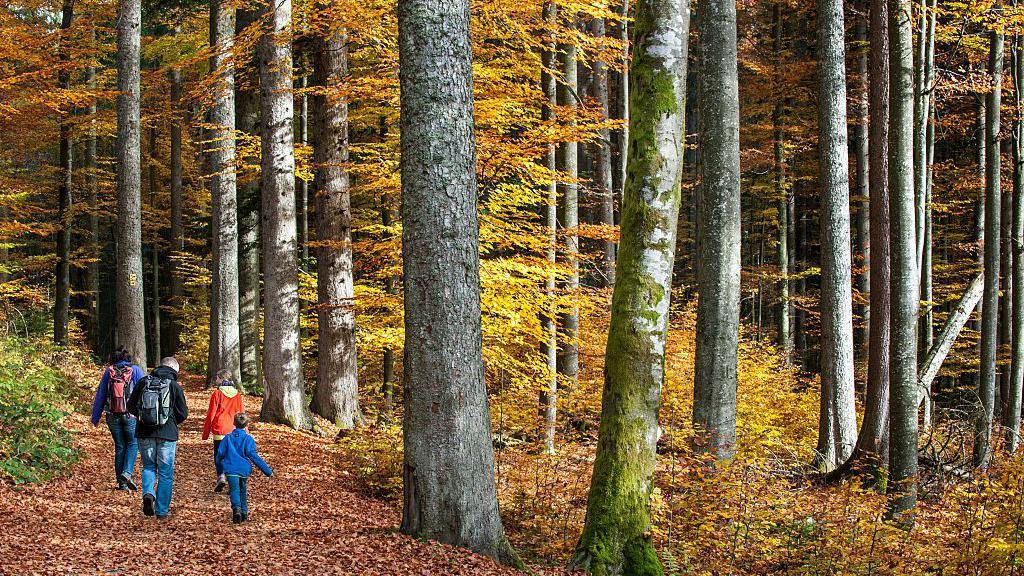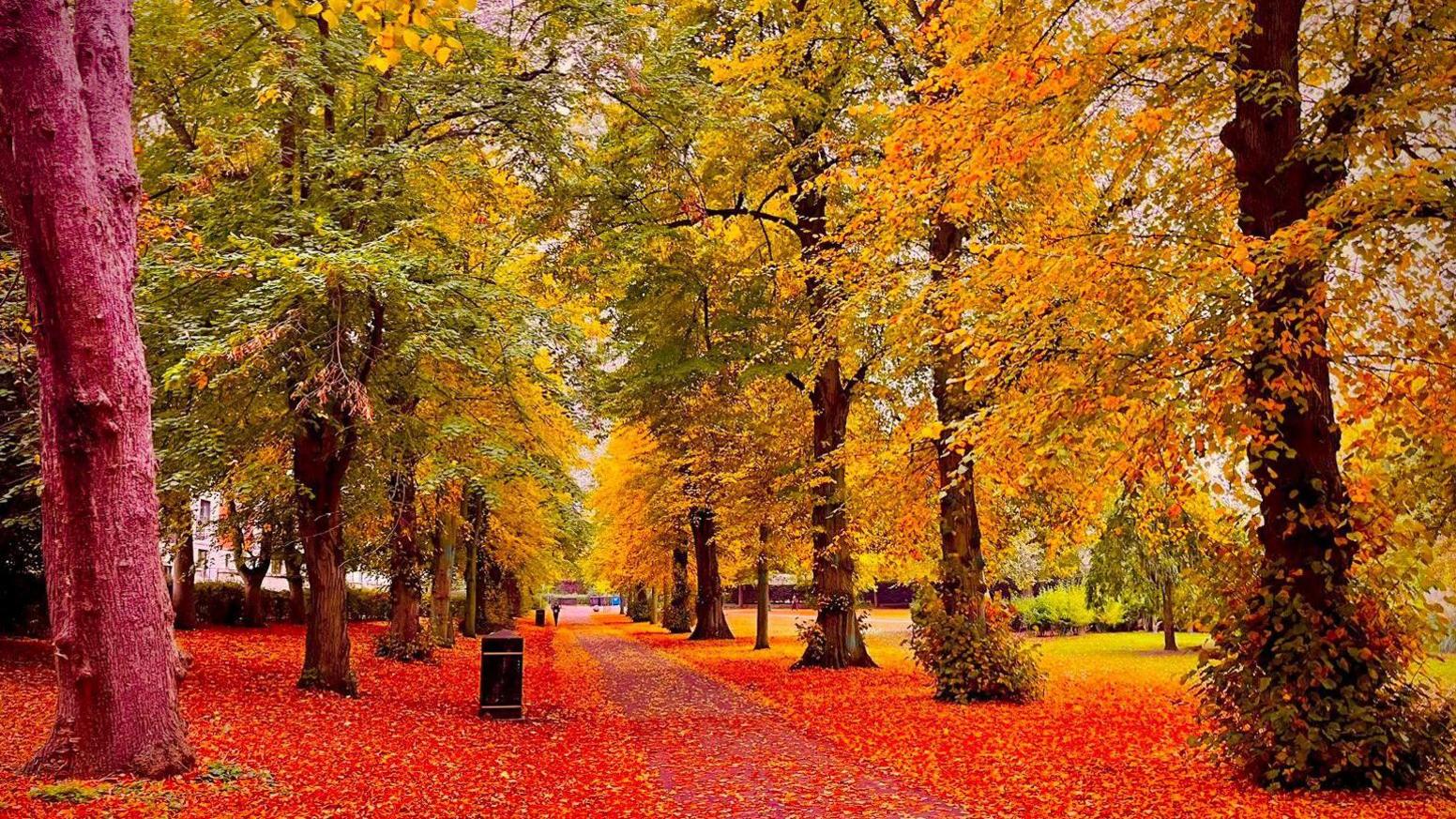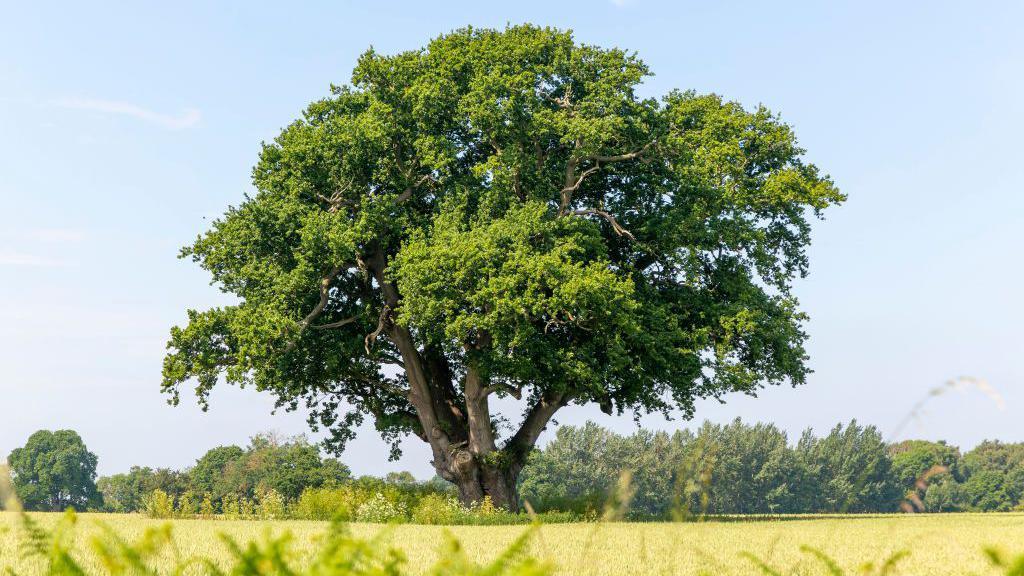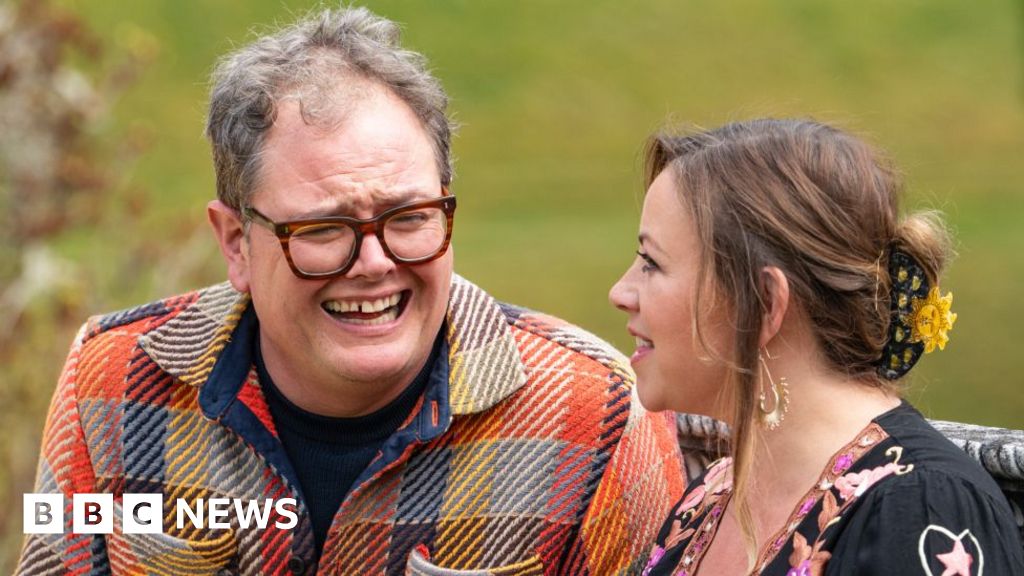 Image source, Getty
Image source, Getty
BySimon King
Lead Weather Presenter
Some of the United Kingdom's most valued trees are struggling to keep pace with climate change and increasing extreme weather.
"We are very concerned that changing conditions are putting our trees under significant stress," warns Dr Eleanor Tew from Forestry England.
To future-proof our forests, a 'species for the future' list has been released highlighting thirty trees likely to thrive in a warmer climate.
It includes familiar names like oak, birch, and alder, alongside less common species such as coast redwood and Corsican pine, which it is hoped will lead to a more resilient woodland.
 Image source, BBC Weather Watchers/Walking Tractor
Image source, BBC Weather Watchers/Walking Tractor
Trees are starting to pop with bright red and gold colours as we head deeper into autumn
While the UK's warmest summer on record has lead to a spectacular display of autumn colours in 2025, generally our trees just aren't coping.
Recent heatwaves have led to trees dying, including 460 in the record-breaking heat of 2022 alone at the Royal Botanical Gardens, Kew.
Kevin Masters, Head of Tree Collections there said: "Something that would have happened once in a decade is going to happen every three or four years."
Through a detailed assessment of how different species would perform under future conditions, Forestry England - who manage publicly owned forests in England - have devised an inventory of trees, external expected to cope better with rising temperatures, changing rainfall, and emerging pests and diseases.
Containing both native and non-native species, the aim is to create stronger, more diverse forests that can adapt to our shifting climate over the coming decades.
The rate of climate change is the main issue
Earth has cycled through glacial and interglacial periods lasting hundreds of thousands of years.
The shift from the last ice age to today's warmer climate took 5,000–8,000 years, where global average temperature rose 4C or 5C, at a rate of around 0.1C every century.
Over this time trees adapted to the changing climate by migration - essentially seedlings growing further south as it got colder and further north during warming periods.
In contrast, human activity has driven a 1.3C rise just in the last century - ten times faster than previously. Trees simply can't keep up.
According to Dr Sarah Dalrymple, plant ecologist at Liverpool John Moores University there are already signs of change with "tree seedlings falling on the ground not being fertilised and dispersed into suitable habitats because it's too dry".
An example is the oak which makes up approximately 20% of our broadleaf tree species but due to 'acute oak decline' - a disease directly related to heat and drought stress - there has been a drop in numbers in central and south-eastern areas.
This is a significant problem because each oak tree supports up to 2,300 species of wildlife including birds, mammals, fungi and insects - the most of any native UK tree - according to the Woodland Trust.
 Image source, Getty
Image source, Getty
Trees such as the common English oak may be under threat in our changing climate
Assisting the migration of trees
Many trees on the list already grow naturally here but some come from warmer or drier regions like the Corsican pine from the Mediterranean or the coast redwood from North America.
Their inclusion reflects growing interest in assisted migration, which means introducing tree species now that are suited to the climate the UK is expected to have in the future.
The England Species Reintroductions Taskforce, an independent advisory group, guides conservation and species translocation efforts.
Dr Dalrymple, a member of the taskforce, told the BBC: "We've been tracking biodiversity loss for years...do we just watch it happen or act before it's too late?"
One suggestion would be to plant the the seed of the common oak currently growing in the Georgia and Azerbaijan border in the UK. It grows in similar soil and environmental conditions to southern England and could be used to sustain future oak populations in the UK.
However, assisted migration also poses challenges.
The UK's increasingly extreme weather, like late spring frosts followed by heatwaves, brings conditions that "are really difficult for trees to adapt to", said Dr Tew of Forestry England.
While some tree species might thrive in the next 50 to 100 years, they may not be suited to weather conditions in the UK now.
All a balancing act
Another concern is the risk of introducing non-native or potentially invasive species.
In 2012 a wind-borne fungus from Asia triggered ash dieback in the UK, threatening up to 80% of mature ash trees.
The disease has serious ecological, landscape, and economic consequences.
But herein also lies the problem.
"If we don't do any conservation and let nature take its course and let say the oak die off, you would lose the wider biodiversity around that," said Mr Masters from Kew Gardens.
And in selecting trees more suited to our future climate it's vital to understand any invasive nature they might have.
Dr Tew explained: "there's no silver bullet...we need diverse strategies across different areas to help trees adapt."
The challenge lies in balancing intervention with the risk of doing nothing, which could result in significant biodiversity loss over time.

Click here to play 'Cooler than me?'
.png)
 4 hours ago
3
4 hours ago
3

















































